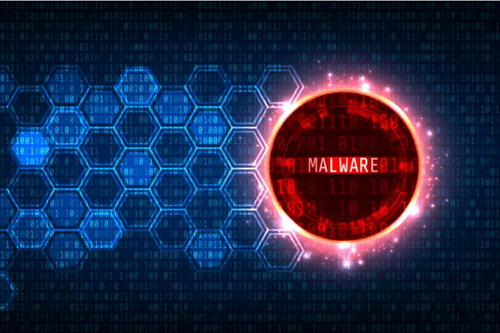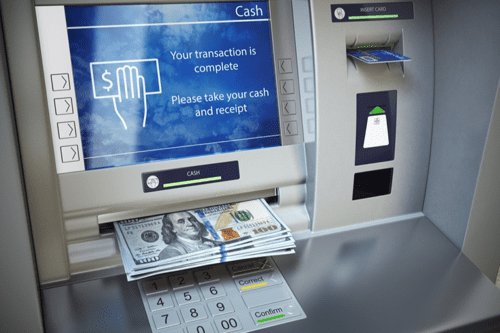

As an IT manager, you’re responsible for a number of important aspects regarding cybersecurity, including devices, users, and vendors. You and your team probably use various tools to help you manage your network, including software that helps prevent cyberthreats from taking hold in your network.
Choosing the right tools to prevent cybersecurity threats can be overwhelming. There are many options, but they often don’t offer one, consolidated solution for all remote access needs. This can lead to inefficiencies and potential security gaps.
If you’ve been curious about TeamViewer or RDP alternatives for your remote access solutions, then keep reading for informative tips on how to find the most comprehensive remote access software to protect against cyberthreats across numerous industries.
Different Types of Cyberthreats
Cyberthreats come in many forms and from a number of sources. According to the U.S. Department of Homeland Security’s Cyber Infrastructure (CISA), the most common threats come from:
- National Governments
- Terrorist organizations
- Organized crime groups
- Hacktivists (hackers looking to further propaganda)
- Hackers
The motives behind these attacks vary, but regardless of who it came from and what type of threat, network breaches are costly for businesses. Some of the most common cyberthreats are:
- Malware
- Phishing
- Man-in-the-middle
- Zero Day
- Denial-of-Service
- Stolen Credentials
It’s important to understand each of these in-depth to give a better understanding of what to look out for and how they may impact networks.


How Cybersecurity Threats Affect Your Network
From malware threats to denial-of-service, your network is always vulnerable. Though, with the right tools, you can protect your network from the following threats:
Malware
Malware can be any number of malicious software that capitalizes on network vulnerabilities. Spyware, ransomware (leveraging attack for ransom payments), and viruses are all considered malware. When malware is installed, it can block access to parts of your network, gain access to sensitive information, or cause disruptions to your system. Malware threats are extremely common and may cause extensive damage to your network.
Phishing
According to a 2017 FBI’s 2017 Internet Crime Report, people lost $30 million because of phishing schemes in just one year. Phishing involves sending fake communication to individuals that appears to be legitimate and reputable. This is most often conducted through email, but could be through other forms of internet communication. The goal of phishing is to obtain personal information–like credit card or social security numbers–or to install malware.
Man-in-the-Middle Attacks (MitM)
These types of cyberthreats and cyberattacks occur when a malicious actor inserts itself between two parties in a network, like a user and a device. The goal of man-in-the-middle attacks is to intercept information. Unsecure Wi-Fi connections and previously installed malware are common points-of-access used in MitM attacks.
Zero Day Attacks
When a network vulnerability is discovered, it may take time to implement a solution. Attackers use this window of time to access networks. Stolen RDP credentials and installing malware can easily take place without network administrators realizing it. Zero Day attacks may also occur on software that’s out of date. The ubiquitous use of Microsoft RDP makes it a common target for attackers.
Denial-of-Service
This type of attack occurs when a network is overwhelmed with traffic making it impossible for the network to respond. Crashes and inaccessible network resources are a result. Everything from email to online accounts may be affected by denial-of-service.


Remote Access Vulnerabilities by Industry
Globalization combined with the ubiquitous use of technology creates an ideal environment for cyberattacks to occur. With more devices, more users, and more remote access, it’s become easier for malicious cyberthreats to take hold.
What does that mean for your industry? The following section offers a guide to the most common cyberthreats by industry to make sure you secure your networks against the most invasive cybersecurity threats.
Retail Industry Cyberthreats
The retail industry has been a major target for malicious attacks due to its vast network of devices and vendors. Managing remote access is an ongoing challenge for retailers, but one that can be improved with secure, consolidated solutions.
POS Systems and Vendors May Pose Cyberthreat to Retailers
A major access point in the retail industry is through point-of-sale (POS) terminals. Each POS device is connected to a larger network so if attackers gain access, it can be detrimental to the entire system, not just a single machine.
Attackers can gain access to devices in a variety of ways, but in many cases, vendors are a weak point that malicious actors exploit. Why? If retailers aren’t aligning their cybersecurity tools and protocol with vendors, it’s possible that vendors don’t have enough security, making them an easy target. Once attackers gain access to vendor systems, they can infiltrate the retailer’s network with malware, which is why setting up a vendor access risk management system is imperative for retail system security.
Compliance Risks
To protect all stakeholders in the retail industry, a number of regulatory guidelines are set forth by local, regional, and national governments around the world. If retailers operating in those locations do not comply with appointed guidelines, they may be penalized; but more importantly, they may be putting themselves and their users at risk.
With so many regulations to follow, and the ever-changing nature of compliance standards, it can be a challenge for retailers to remain compliant. Choosing remote access solutions that exceed the highest levels of compliance is the best way to ensure security from cyberthreats. The following are common standards that retailers need to comply with:
- PCI DSS: If your organization handles credit card transactions, you’ll need to follow these guidelines.
- GDPR: Guidelines for the collection and processing of personal information for people in the EU.
- CCPA (California Consumer Privacy Act): Enacted on January 1, 2020, this comprehensive law is designed to give consumers more control over their personal information.
Finance Industry Cyberthreats
Supporting end users and the vast network of equipment used in the finance industry is a major challenge. With so much personal information transmitted through financial networks, it’s an easy target for cyberattacks.
To gain easy access, attackers often use phishing schemes that target users within the organization and its customers. With access, attackers can:
- Use social engineering to steal user credentials giving them access to network
- Wipe data
- Implement ransomware
- Install malware onto devices like ATMs
Manufacturing Industry Cyberthreats
Manufacturing businesses operate a number of devices, like automated machines, that aid in production. If a data breach occurs on one of these machines, it can slow productivity and cause lasting effects, or compromise the safety of employees and equipment. Additionally, malicious actors can target customer information once they gain access to a network through one of these machines, or through a third party.
Phishing schemes that open up a network to malware attacks are common points of entry and must be monitored by IT departments to prevent attacks that may go unattended for long periods of time.
Healthcare Industry Cyberthreats
The healthcare industry is a popular target for cyberattacks because of the vast network of personal data and the growing number of connected medical devices. From desktop PCs to diagnostic equipment, the healthcare field presents a number of access points that are potentially vulnerable.
Common cybersecurity healthcare threats include:
- Ransomware that slows down processes in healthcare facilities
- Phishing emails that contain malware
- Denial-of-Service attacks that slow transmission of important patient information
- Malware designed to steal credentials and access private information
How to Avoid Remote-Threat Malware
So many of the cyberthreats originate from malware and one of the most common ways malware is installed is through remote desktops. It’s crucial that remote desktop access be secure at the highest levels to prevent malware from taking hold, and often, left undetected for long periods of time.
Secure remote desktop threats abound, especially if using out-of-date operating systems or software that doesn’t adhere to high security levels. To ensure the highest levels of cybersecurity, you need one, consolidated remote access solution that provides the following benefits:
- Centralize remote support: This saves time, money, and prevents security gaps that are more common when relying on multiple tools to access devices.
- Customized software: Depending on the size and scope of your business, you can customize hosting configurations.
- Ensure cross-platform connectivity: Whether you’re managing a network in the healthcare industry or retail, a number of devices, with various operating systems may be used. To provide efficient, secure remote access, it helps to have one solution that is compatible with multiple platforms.
- Exceed compliance standards: Adhere to regulatory standards around the world with confidence, knowing that your remote desktop is secure and compliant, protecting your business and your customers.
- Implement vendor risk management protocol: Establish guidelines that align your business’s security with your vendors’. This helps to eliminate costly data breaches, inefficiencies, compliance issues, and challenging vendor relations.
Use Impero to Protect Against Cyberthreats
If you’ve been searching for an RDP or TeamViewer alternative, look no further than Impero Connect. As a consolidated remote access solution, Impero Connect is the comprehensive tool to streamline cybersecurity processes, manage vendors, and help mitigate cyberthreats. Safeguard your network, vendors, and customers all while consciously scaling your business efficiently and securely.


